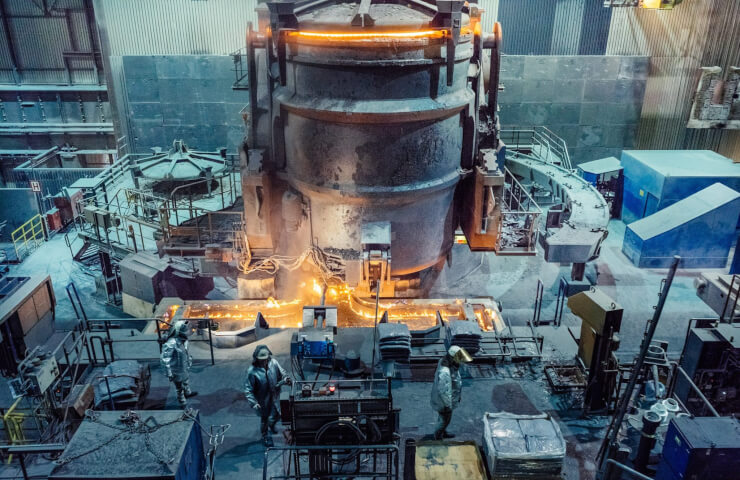The Chinese steel industry is emerging from the crisis, according to the latest statistics, with output and profitability likely to continue to pick up in September as the world's second-largest economy finally begins to respond to government efforts to spur consumption growth.
p>Incipient signs of recovery come after steel production fell 3.4% in the first seven months of 2022 from the same period a year earlier, as the world's largest steelmaker struggled with lockdowns to prevent the spread of COVID-19 , and faced energy shortages amid summer heat and drought.
Shanghai rebar recovers from this year's closing low of 3,704 yuan (approximately $539) per tonne on July 15 to 4,078 yuan on August 26.
While the 10% recovery over the past six weeks is positive for steelmakers, it still leaves the base price about 20.5% below the peak of 5,133 yuan per ton on April 6, 2022.
However, steel mill profitability, which was negative in July, is back in positive territory as S&P Global Commodity Insights reported Chinese steel producers profits of around $50 per tonne of rebar in August.
Reinforcement stocks are declining as factories are cutting production amid high energy prices and some electricity restrictions, with SteelHome consultants reporting inventories of 5.19 million tons in the week to August 26.
Stocks have declined over the past nine weeks and are now about 2 million tonnes below the 7.13 million recorded in the same week in 2021.
Steel inventories typically decline as construction activity picks up, but declines were marginal between March and the end of June this year amid weak economic activity driven by severe COVID-19 lockdowns.
However, the acceleration in the rate of rebar inventory use is likely to force factories to increase production.
In addition to the need to replenish supplies, there is evidence that Beijing is taking additional steps to boost economic activity, including increasing financial support for infrastructure projects and lowering interest rates.
Of course, the new measures are not a panacea for China's troubled construction sector, but in some cases they should help boost confidence and activity.
While the demand side of the equation looks a bit more positive for steel, another stabilizing factor is that resource side costs are becoming more even, with both iron ore and coking coal appearing to be flat. levels that will ensure the continued profitability of steel mills.
Benchmark 62% iron ore for northern China traded at $105.65/t on August 26, up 7.2% on the week as the price reacted to stimulus announcements.
Growth of this magnitude indicates that there is still volatility in the price, but it is worth noting that for most of August, the spot price fluctuated in the range of about $7 in both directions from $105 per ton.
Over the past 12 months, the spot price of iron ore reached $160.30 per tonne in March and dropped to $87 in November. Thus, a more stable price is likely to encourage steel mills to continue buying raw materials.
Certainly, China's iron ore imports will be solid in August, with Refinitiv estimating an entry of 103.1 Mt, which would be the strongest monthly figure this year and above the customs entry of 91.24 Mt in July.
The price of coking coal in China has been falling in recent months in line with the price of ocean freight from Australia's largest exporter.
China buys only small amounts of coking coal from the maritime market, getting most of its domestic and overland supplies from neighboring Mongolia.
The price of coking coal in the steel province of Hebei was 2,300 yuan per ton on August 26, lower than this year's high of 3,150 yuan in May.
The price in Hebei Province has been 2,300 yuan per ton or lower since July 25, boosting steel producers' margins.




